England has had its good monarchs, bad monarchs,
indifferent monarchs, mad monarchs and saintly monarchs. Some fully deserve the
manner in which they are remembered, whilst others have had their deeds and
characters altered to suit the purposes of later writers.
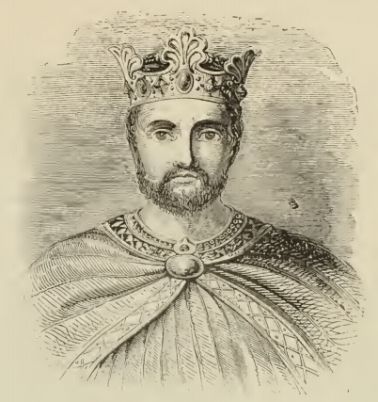 |
| Richard I |
Take Richard I as an
example -fondly remembered as Richard the Lionheart, he is held up as the model
of chivalric valour and kingship, a ruler of legendary and impeccable
reputation, regardless of the facts that he did not speak English, spent only six
months of his ten year reign in the country (and was entirely absent for the
final five years) and almost bankrupted his kingdom with the cost of his
Crusades and the payment of a ransom to free him from Leopold V, Duke of
Austria, an amount equal to over two billion pounds in today’s currency.
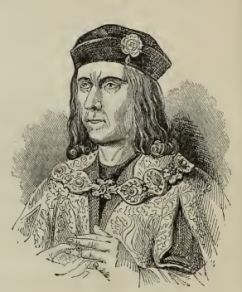 |
| Richard III |
And
what of Richard III? Good king or bad king? Well, it all depends on whose
version of events you choose to believe. Richard has a bad reputation, but
whether it is deserved or not is another matter. And if that reputation is
based on anything, it is based on Richard’s treatment of his nephews. Richard’s
brother, King Edward IV, had ten legitimate children, seven of whom survived
him, and when Edward died, in 1483, his two sons, Edward and Richard, then aged
12 and 9, were placed in the Tower of London by their uncle, ostensibly for
their own protection.
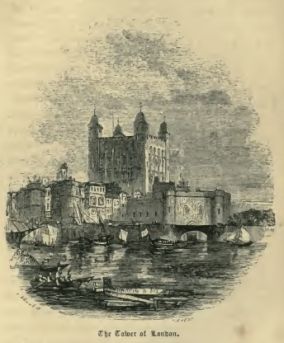 |
| The Tower of London |
The eldest of the children, Edward, was recognised as
King Edward V, with his uncle Richard acting as Lord Protector, but manoeuvres
and machinations were soon underway, as rumours surfaced that Edward IV’s
marriage to Elizabeth Woodville might not have been valid. Edward, it was said,
had sealed a legal precontract to marriage with Lady Eleanor Talbot, thereby
rendering his later marriage to Elizabeth Woodville invalid, and rendering all
of their offspring illegitimate, in turn making any of them unable to succeed
to their father’s throne.
On June 22nd 1483, Dr Raaf Shaw preached a
sermon before St Paul’s Cathedral, taking his text from the Book of the
Wisdom of Solomon iv:3,
“But the multiplying brood of the ungodly shall not thrive, nor take deep rooting from bastard slips, nor lay any fast foundation.”
With Edward V declared
illegitimate, Richard was asked to assume the crown, which he accepted with
feigned reluctance on June 26th, and was crowned King Richard III on
July 6th. In 1484, parliament passed an act, Titulus Regius,
that formally and legally legitimised Richard’s accession. Meanwhile, the
deposed Edward and his brother Richard remained in the Tower, where they were
seen less and less, and finally they were seen no more. The rumour was that
their uncle had had them murdered, and the Chronicles of London for the
year 1484 records,
“… the said kyng Richard had put to deth the lord Chamberleyn and other Gentilmen, as before is said, he also put to deth the ij childer of kyng Edward, for whiche cawse he lost the hertes of the people.”
Richard may have been King but his position was precarious, to say the least.
In 1485, Henry Tudor,his Lancastrian rival for the crown, met him in battle at
Bosworth and Richard was killed, making him the last English King to die in
battle. Henry was crowned as Henry VII, and the Lancastrian Tudors took power
from the Yorkist Plantagenets. The Tudor propagandists then set about rewriting
history to legitimise their claims to the throne, skewing the story to blacken
Richard’s regime and add a shine to their own.
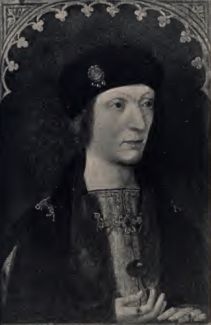 |
| Henry VII |
At the instigation of Henry VII,
Polydorus Vergil, the celebrated Italian humanist scholar who became a
naturalised Englishman, began to write an Anglica Historia in about
1505. Although he had completed his History by about 1512, it underwent
several revisions and was not published until 1534. Vergil has been called the
‘Father of English History’, and was among the first historians to comment on
the events he wrote about, unlike the earlier chroniclers who provided, on the
whole, simple lists of dates and happenings.
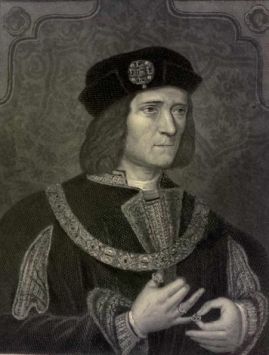 |
| Richard III |
Writing about Richard III, Vergil
says,
“He was lyttle of stature, deformyd of body, thone showlder being higher than thother, a short and sowre cowntenance, which semyd to savor of mischief, and utter evydently craft and deceyt. The whyle he was thinking of any matter, he dyd contynually byte his nether lyppe, as thowgh that crewell nature of his did so rage agaynst yt self in that lyttle carkase.”
 |
| Sir Thomas More |
Sir Thomas More,
writing a little later, in his unfinished History of King Richard III,
also describes Richard’s physical appearance,
“Richarde the third sonne, of whom we nowe entreate, was in witte and courage egall with either of them, in bodye and prowesse farre vnder them bothe, little of stature, ill fetured of limmes, croke backed, his left shoulder much higher then his right, hard fauoured of visage, and suche as is in states called warlye, in other menne otherwise, he was malicious, wrath-full, enuious and, from afore his birth, euer frowarde.”
A suspiciously similar portrait appears in Raphael Holinshed’s Chronicles published
in two editions in 1577 and 1587,
“As he was small and little of stature, so was he of bodie greatlie deformed; the one shoulder higher than the other; his face was small, but his countenance cruell, and such, that at the first aspect a man would judge it to sauour and smell of malice, fraud, and deceit.”
Then, writing even later still, but still mindful of Tudor Myth and using
Holinshed as source material, William Shakespeare’s Richard III has
Richard describing himself thus,
“ I, that am curtail'd of this fair proportion,Cheated of feature by dissembling nature,Deform'd, unfinished, sent before my timeInto this breathing world, scarce half made up,And that so lamely and unfashionableThat dogs bark at me as I halt by them.”
Such
emphasis on deformity runs throughout the play, as when Queen Elizabeth, widow
of Edward IV, says,
“O, thou didst prophesy the time would comeThat I should wish for thee to help me curseThat bottled spider, that foul bunch-back'd toad.”
The picture of Richard as a broken, ill-made monster was set with such works
and it is the picture that endures, via Laurence Olivier’s portrayal in the
1955 film version of Richard III, down to the present, although there
have been reappraisals and revisions over the years, and I will return to these
soon.
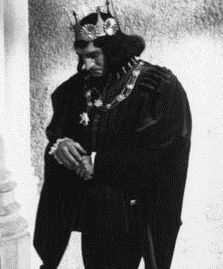
No comments:
Post a Comment